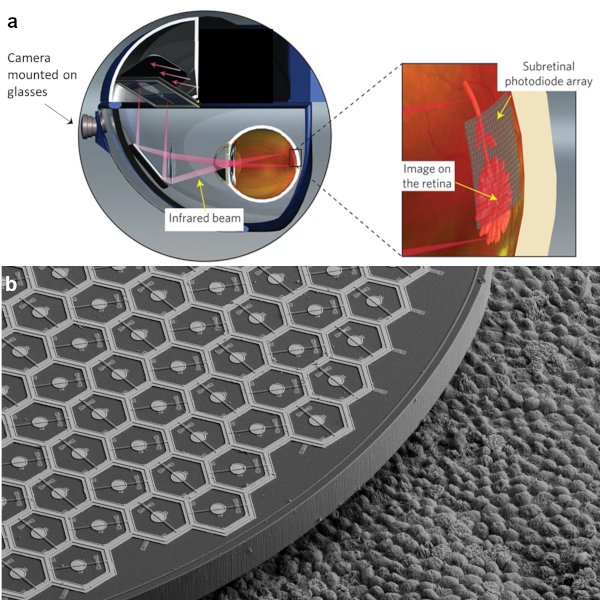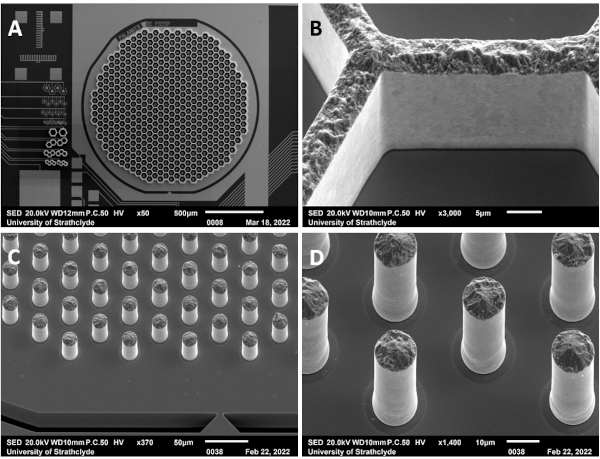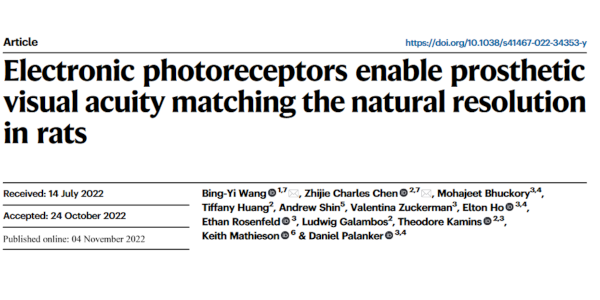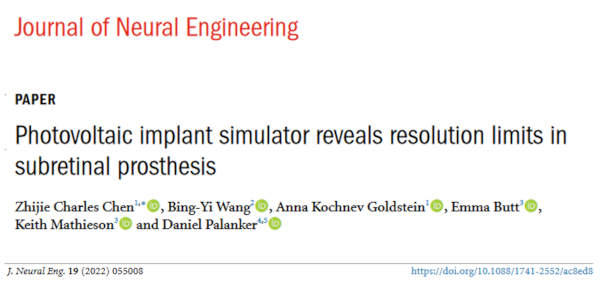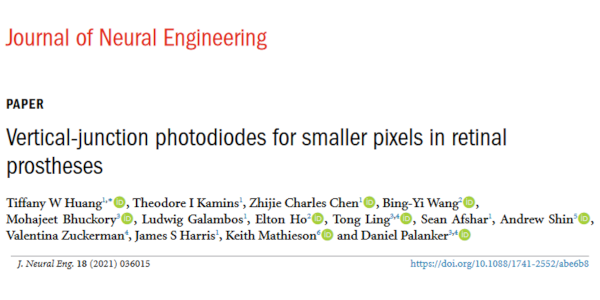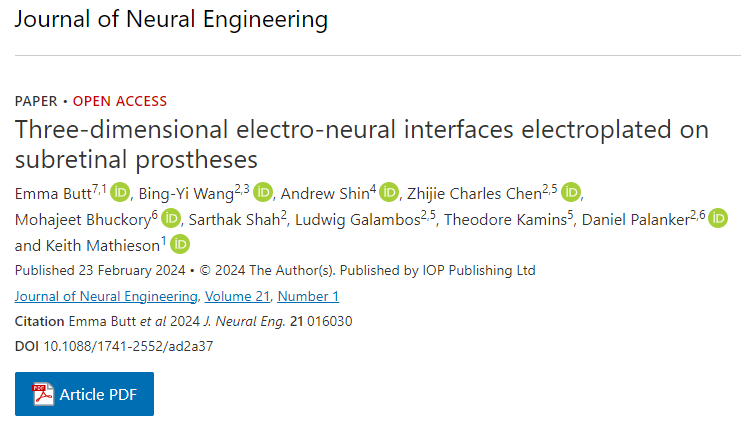A photovoltaic retinal implant
Degenerative retinal conditions, such as age-related macular degeneration, lead to the light-sensitive photoreceptor cells dying off, while the inner retinal neurons are relatively well preserved. Electrical stimulation of the surviving retinal neurons can elicit visual responses in patients. Here we are developing a photovoltaic implant chip that takes the place of the photoreceptors and receives power and the visual information wirelessly via IR pulses. The image on the right shows the concept, where a camera mounted on a set of glasses monitors the visual scene. This dynamic image is converted to pulses of patterned IR light and focussed onto the silicon implant. Individual pixels absorb the IR light and convert it to electrical stimulation pulses that activate inner retinal neurons.
The project is led by the Palanker Lab at Stanford University, who have produced an animation of the concept.
